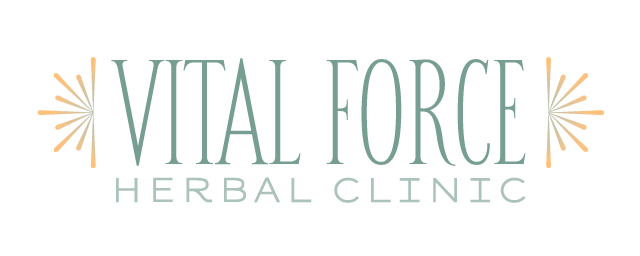HISTAMINE INTOLERANCE, and HOW TO WEAN OFF OF ANTIHISTAMINES
About 12 years ago, my doctor was treating me for an infection with a common antibiotic. Until then, I had taken it with no problems or reactions. Three days into the treatment, I began to experience hives when some pressure was put on my body for any length of time (like carrying a plastic shopping bag on my wrist.) I went back to my doctor and she checked to see if I reacted to other plastics. Nope. She determined that I had an allergic reaction to the antibiotic and advised me to take Zyrtec. Indefinitely.
I took Zyrtec obediently for 10 plus years, but noticed that if I forgot to take a dose, I’d immediately get itchy. At first, I thought it was still due to the initial reaction to the antibiotic but quickly dismissed that as a root cause. Instead, I did a deep dive to learn about how our bodies use and process histamine. I found that I had built up so much histamine in my system that I now had an intolerance. Histamine intolerance occurs when there’s an excess of histamine in the body or when the body is unable to break down histamine properly. This can lead to various symptoms like headaches, hives, digestive issues, and more. I had all of the above.
I decided it was time to do some research. I read extensively about histamines and their effects on us. For support, I joined a group on Facebook called “Kicking the Big Z” for people who were trying to wean off of Zyrtec and other histamines. It took me 18 months to completely stop Zyrtec, and even then, for over a year after – I still experienced occasional breakouts of hives, bad headaches, and digestive upsets. I am certain that the length of my “weaning off period” was directly correlated to my 10+ years of antihistamine use.
Here’s how I managed to reduce – and finally – eliminate using antihistamines.
- I titrated my doses down very slowly. I went from one pill a day to half a pill, then a quarter of a pill, then switched to children’s liquid Zyrtec to reduce dosage further incrementally.
- I took a product called “Histamine Block” that, coupled with a low-histamine diet, helped my symptoms a lot.
- I drank plenty of water every day.
- I increased my sleep schedule to a minimum of 7.5 hours per night.
- Ice packs help with itching. So does calamine lotion, oatmeal baths and oatmeal-based moisturizers.
- I took a quality multivitamin, and supplemental magnesium (glycinate).
- I ate an anti-inflammatory and low-histamine diet.
- I incorporated anti-inflammatory herbs.
Some foods made my symptoms worse. That’s because certain foods are naturally high in histamine or trigger its release in the body. Common culprits include aged cheeses, fermented foods, alcohol, processed meats, and certain fruits and vegetables like tomatoes and spinach. I learned that following a low-histamine diet can help reduce symptoms for those with histamine intolerance. This involves avoiding high-histamine foods and opting for fresh, minimally processed options.
Certain herbs possess anti-inflammatory properties that can help counteract histamine reactions. I tried to consume these herbs/nutrients regularly.
Examples include:
- Turmeric: Contains curcumin, a potent anti-inflammatory compound. Add it to your diet – there are plenty of recipes that include this spice, including a lovely “golden milk” warm drink that helps you relax before bed.
- Ginger: Known for its anti-inflammatory and digestive benefits. Try Yogi Ginger tea or Organic India Tulsi Turmeric Ginger Tea! Both are available at most large supermarkets or online.
- Quercetin: Found in foods like onions, apples, and berries, quercetin acts as a natural antihistamine.
- Nettle: Often used in herbal medicine to alleviate allergy symptoms.
- Bromelain: Found in pineapple, bromelain has anti-inflammatory effects and may help with digestion.
Supportive Nutrients: Certain nutrients can support the body’s ability to break down histamine or mitigate its effects. These include:
- Vitamin C: Acts as a natural antihistamine and supports immune function.
- Vitamin B6: Involved in histamine metabolism.
- Magnesium: Helps regulate histamine release and supports overall immune health.
- Omega-3 Fatty Acids: Found in fatty fish like salmon, omega-3s have anti-inflammatory properties.
- Probiotics: Gut health plays a crucial role in histamine intolerance, as a healthy gut microbiome can help metabolize histamine. Probiotic-rich foods like yogurt, kefir, and fermented vegetables can support gut health.
If you don’t normally get all the nutrients noted above because you recognize that your diet may lack the vegetables and fruits needed for sustaining optimal health, you may need to use supplements. I eat pretty healthy, but I found that the supplements kept my nutrients at optimum levels and supported my withdrawal process.
As a trained clinical herbalist and graduate of the two-year professional herbalist program from IIEI, I’ve created a plan in my dispensary for my clients with the products I used to get through my withdrawal. Some people are able to titrate down their antihistamine dose much more quickly than I did, but be prepared for some uncomfortable days – and especially – nights.
Here’s the link to my dispensary with the products I found helpful.
https://us.fullscript.com/plans/vitalforceherbalclinicllc-antihistamine-product-withdrawal-plan
It’s important to recognize that what works for one person may not work for another. Keeping a food diary can help identify trigger foods, and working with your healthcare provider or nutrition specialist can provide personalized guidance.
Stress management techniques, adequate sleep, and regular exercise can also support overall health and may help reduce histamine intolerance symptoms.
By incorporating these strategies into one’s lifestyle, individuals with histamine intolerance can better manage their symptoms and improve their overall well-being.

Leave a Reply